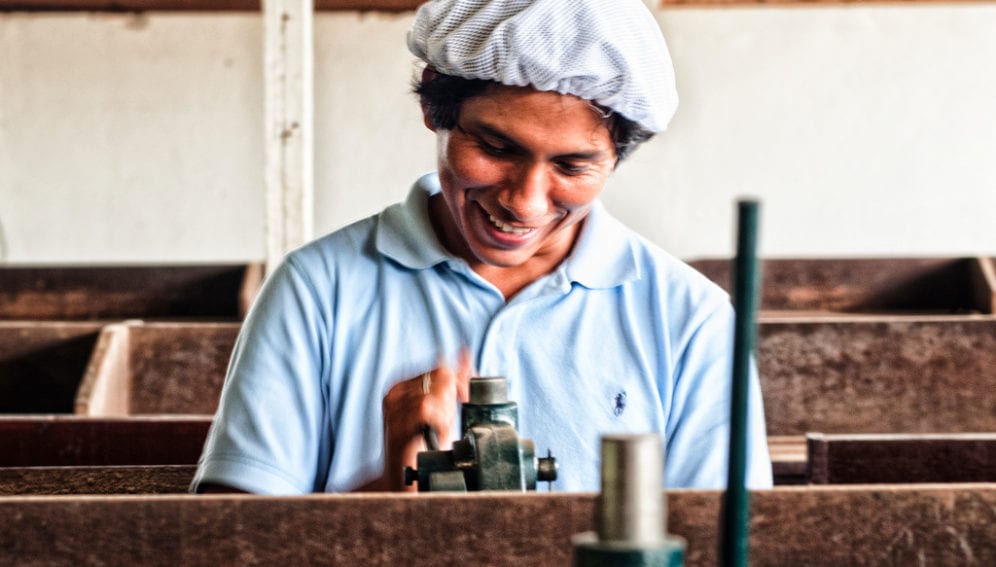Send to a friend
The details you provide on this page will not be used to send unsolicited email, and will not be sold to a 3rd party. See privacy policy.
[SANTIAGO] Over the past decade, six Central American countries have introduced more-active science, technology and innovation (ST&I) policies, but the results of those attempts to improve research remain “meagre”, says a study.
Their efforts are plagued by several barriers, including poor funding and a lack of political commitment to supporting science, the paper says.
It recommends stronger regional integration which may lead to more-efficient and less-redundant research and innovation in Central America, but also other small countries, according to experts.
The number of scientific publications per million inhabitants for Costa Rica, El Salvador, Guatemala, Honduras, Nicaragua and Panama, the six countries included in the study, is below the Latin American average but the differences between the best performers — Costa Rica and Panama — and the rest is huge, the paper says.
“Public bodies in charge of ST&I policies lack the resources and the leverage to push their own agendas across all ministries.”
Ramón Padilla-Pérez, ECLAC
Also non-residents make more patent applications within these countries than residents, it says. Costa Rica and Panama lead the group by far in terms of patent applications by residents, but even they are below the Latin American average, it adds.
There are two main reasons for the disappointing results, according to the study authors.
First, high-level political support for ST&I policies is still absent. And second, public ST&I programmes are generally underfunded: in 2010, average research and development (R&D) investment was 0.16 per cent of GDP (gross domestic product) in Central America, compared with an average of 0.75 per cent for the whole of Latin America.
“Public bodies in charge of ST&I policies lack the resources and the leverage to push their own agendas across all ministries,” Ramón Padilla-Pérez, lead author of the study and a researcher at the Mexico office of the UN Economic Commission for Latin America and the Caribbean (ECLAC), tells SciDev.Net.
Despite governments drawing up new policies and setting-up institutions to support science and innovation, national ST&I plans are usually not fully implemented nor monitored, there are no tax incentives for firms that do R&D, and funding to support relevant activities, such as projects, research internships and postgraduate studies, are tiny, the study says.
But these barriers may be overcome in the medium- and long-term by stronger and longer-lasting public policies supported by adequate human and financial resources, the paper says.
Marta Pérez Cusó, an economic affairs officer at the UN Conference on Trade and Development, says that Central American countries must focus public efforts and resources on a limited number of areas and productive sectors and encourage firms to innovate and carry out R&D.
She also agrees with the paper’s recommendation that regional integration can be a long-term strategy for strengthening innovation in Central America.
“Key collaboration areas may include the sharing of ST&I infrastructure, intensified collaboration in human resources development or the pooling of financial resources and expertise to promote innovation in two or three target sectors,” Pérez Cusó tells SciDev.Net.
Padilla-Pérez thinks that integration efforts may be led by the Commission for Science and Technology Development in Central America and Panama (CTCAP), initially by setting up a regional ST&I fund and regional research groups and clusters in selected areas.
He adds that the barriers the paper identifies exist in many other small economies and so the lessons proposed are also applicable to them.
In his view, the priorities for other small economies are to create well-funded ST&I institutions, to adopt active ST&I public policies and to improve their coordination with other national development policies.
Regional integration would also help them reap economies of scale, avoid fragmentation and boost ST&I’s contribution to economic and social growth, Padilla-Pérez adds.
The paper is in press in Research Policy.
References
Research Policy doi: 10.1016/j.respol.2013.10.011 (2013)














